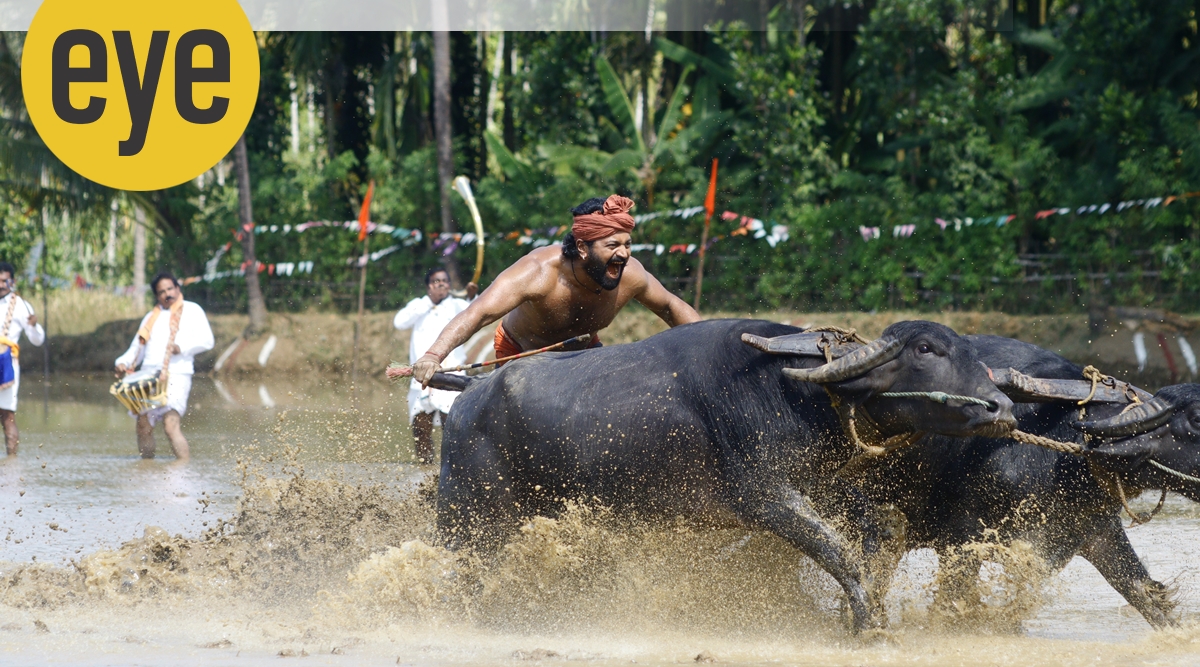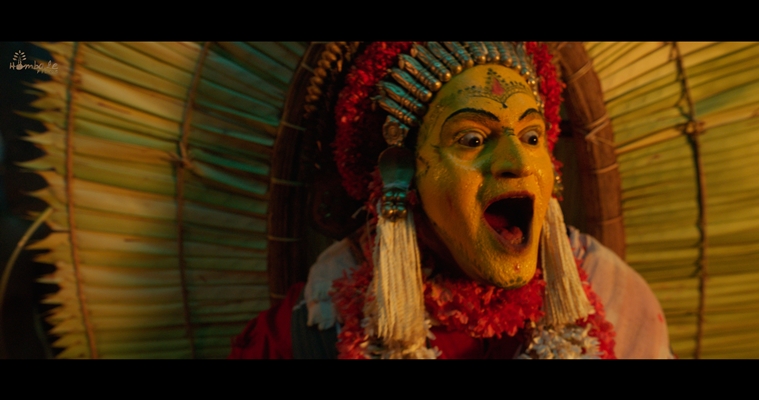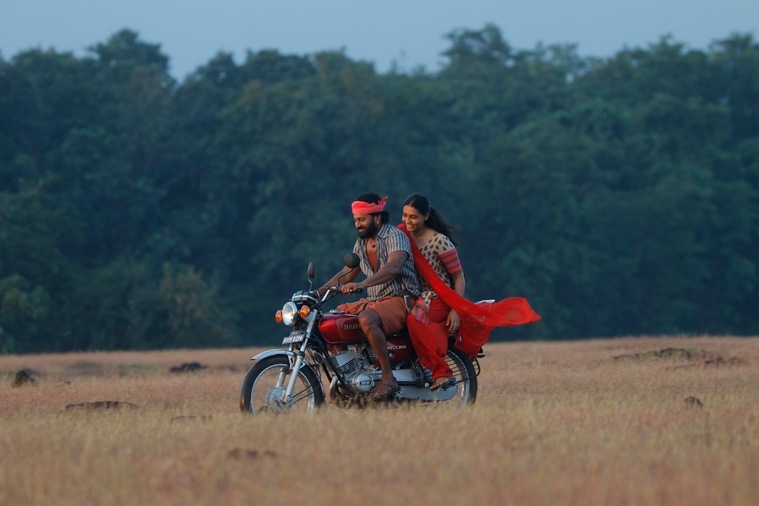 Rishab Shetty in a still from Kantara.
Rishab Shetty in a still from Kantara.THE phenomenal success of the Kannada movie Kantara, a big-screen spectacle which is a masterly mix of myth, folklore, drama and action, has reiterated the authenticity and appeal of stories rooted in our cultural milieu. If Rishab Shetty, 39, its writer, director and lead actor, is to be believed, the script was written in five months, was made at a frenzied pace without sparing much thought for its possible box-office fate.
The story of Kantara (which means “mystical forest”), one of the most talked-about movies of this year, opens in 1847 when a king is granted peace of mind by the divine spirit Pinjurli, who protects the forest and its inhabitants, in exchange for large swathes of land. When the story shifts to 1990s, it focusses on hot-headed Shiva, essayed by Shetty, and his clashes with zealous forest officer Murlidhar (Kishore), who is on a mission to set up a reserve forest, while the local landlord has his own designs.
 A still from Kantara.
A still from Kantara. During an interview, Bengaluru-based Shetty demystifies the process of creating the visceral mass entertainer and layering it with local belief and tradition. He also talks about his journey as a film professional and why he doesn’t plan for anything. Excerpts:
You are the writer, director and lead actor of Kantara. How do you handle different responsibilities simultaneously?
All these are connected. Though my ambition was to be an actor, I don’t come from a film background. I did photoshoots imitating popular actors’ styles and approached producers. So, I knew getting a chance to act was tough since I didn’t have any connection. I thought if I started working in the industry, I would develop some contacts and then maybe I would get some assignments. The first opportunity I got was on the sets of Cyanide (2006); I ran errands. Over the 27 days of its shooting, several members of the crew left for various reasons. So, I got promoted as an associate. That’s when I learnt about filmmaking, which was much more challenging and satisfactory compared to acting. I knew this would give me more scope to explore the stories and how to tell them.
Kantara has scenes featuring you winning kambala (bull race) and also performing bhoota kola (a ritualistic folk dance). How much did you have to prepare for them?
We shot the kambala sequence on our family land. Since my childhood, I have watched these races and bhoota kola rituals. I always wished to weave these traditional rituals into the script. In Kantara, I talk about human-nature conflict, ancient rituals and beliefs. Before we started shooting, I took out time from our pre-production work to rehearse for the bull race. Since the movie has so many action sequences, I had to be physically fit. Under the supervision of a trainer, I practised mixed-martial arts for six months.
What was most challenging for you?
There are several scenes which were challenging but I didn’t think much about that. We came up with this idea in April 2021 and in five months the script was ready. We created the film’s set in my native village Keradi, in Karnataka. We just went with the flow and worked very hard on finishing it. Some members of the crew from the direction, art and production department even left the project midway (laughs).
Anything you would like to change if you could?
Nothing. I don’t want to analyse so much now. When we did the film, we gave our 100 per cent. If there are any flaws, we will rectify that in our next project and probably make new mistakes.
The female characters, mainly Leela (Sapthami Gowda) and Kamala (Manasi Sudhir), could have been more prominent and layered?
 Rishab Shetty with co-star Sapthami Gowda, who plays the character of Leela.
Rishab Shetty with co-star Sapthami Gowda, who plays the character of Leela. In this love story of Shiva and Leela, I tried to show her as having a purpose as she was appointed as a forest guard. We tried to establish their strengths effectively as per the narrative’s demand. The film, however, focusses more on Shiva and Murlidhar. The daiva (divine spirit), too, has a strong presence and journey in the story.
Given the film’s enormous success, do you think the time has come for more pan-Indian stories?
After being exposed to content from different parts of the world, audiences are more interested in stories that are grounded, rooted and reflect Indian sentiments. Only we can tell the stories related to our culture.
How are you processing the all-India success of Kantara?
After the film’s release and a busy schedule, I spent some time with my wife and two children at home. So, I am calm now. It has been 18 years since I joined the industry as an assistant director in 2004 after completing my course in film direction (from Government Film and Television Institute, Bangalore). I didn’t join the film industry to chase success but for the love of cinema. I found validation of that belief with the success of Kantara.
What drew you to cinema?
When I was in Class V, we got a colour television set at my home with a big antenna. Every Sunday, around 100 villagers used to turn up at our home to watch movies. My mother Ratnabali Shetty, who was a die-hard fan of Dr Rajkumar, had a huge impact on me. No matter how busy she was, she would drop everything if a song featuring Rajkumar came on TV, and get emotional watching it. Whenever she got angry with me, I used to do his mimicry to escape punishment. When I was in Class VI, I took part in a yakshagana performance. People appreciated my performance, which drew me to acting. When I joined college in Bangalore, I participated in theatre activities.
What made you take up direction and produce movies?
My career has not been a planned one. I wrote the story of Ricky (2016) and Rakshit Shetty was the lead actor in it. While I was directing it, the producer meddled too much and kept making demands like putting a song sequence or comedy scene. It was a love story set against the backdrop of the Naxalite movement. After that, Rakshit and I decided to start a production house. We made the movie Kirik Party (2016), which was a huge success. Even though people had their doubts, I wrote and directed a children’s movie, Sarkaari Hiriya Praathamika Shaale Kaasaragodu (2018), which not only became a success but bagged a National Award, too.
What does your road map look like now?
I don’t know. While making Kantara, my aim was to tell a story that’s rooted in the culture of coastal Karnataka. It has now become much bigger than that. With its dubbed versions being a major success, it’s now an Indian film originally made in Kannada. It has blurred the language barrier. I will make a Kannada movie again. But first, I will disconnect myself from all the expectations Kantara has created. It has to be an organic process.